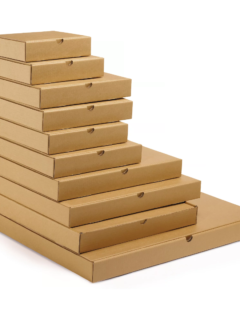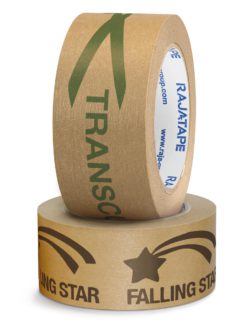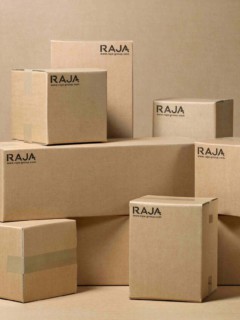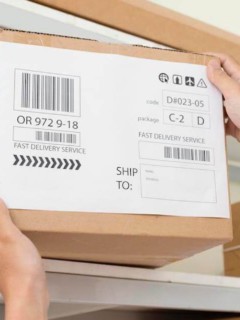Packing electronic equipment and household appliances requires a lot of precision and the use of specialised packing materials. The same applies to shipping cables via courier. This applies mainly to online shops that distribute electronic components and cables needed for power and ICT networks. Check out our guide and find out how to send cables safely.
Packing and shipping cables by courier – are you sure it’s safe?
There are no contraindications to sending electrical cables by courier. Why? Well, the cables themselves do not pose any danger to the package or the people in the vicinity. Those responsible for shipping goods of this type should know how to pack parcels safely. RAJA’s guide on this subject can be incredibly useful, especially for those taking their first steps in warehouse operations.
While packing consumer electronics can be demanding and problematic, shipping the cables themselves is not much of a problem. In this case, just a few things need to be taken care of:
- No excessive kinks in the electrical cables – the cables in the package should lay naturally, without risky kinks.
- Zero moisture in the parcel – electrical cables are highly sensitive to the effects of moisture and water, so it is worth buying moisture absorbers in sachets and placing them in the parcel with the cables.
- Adequate protection of cables against the risk of abrasion or cutting – never place cables just below where the carton is cut to open the package.
Simply following the above rules will make packing cables for shipping much more convenient. The most important thing is that the cables arrive intact to the potential customer.
What packing materials are useful for shipping cables? Check it out!
There really are plenty of operational materials that can be used at the packing stage of electrical and other cables for courier shipping. These include not only corrugated cardboard boxes, but also products such as:
- Anti-static bubble wrap bags – an essential accessory for a warehouse involved in shipping cables and sensitive electronics. By enclosing goods in such packaging, you reduce the risk of electrical surges that could lead to a short circuit or damage to the product or even the entire package.
- Packing sacks and pouches – this is a group of products that are ideal for packing small electronics, as well as cables. You can send small cables for repairing electrical appliances, as well as thicker cables for use in buildings, such as during the construction phase of an electrical installation, in Zip Bags.
- CutCartons for shipping – are great for shipping cables, especially if you do not want to expose the cables to the risk of being cut, e.g. when the recipient opens the package. The cut cardboard carton models have a convenient opening, as well as reinforced edges. This ensures that even a long journey of electrical cables will not pose any risk to their condition.
- Stretch film – this is the basis when it comes to products for packing cables for dispatch. You can use it to wrap the finished cables for shipping or to additionally protect the consignment from the outside. This minimises the risk of water or moisture getting into the parcel.
- Heat-shrinkable fo il – works well for shipping small and sensitive cables. By sealing the cable bundle with shrink wrap, you not only protect the goods for the duration of transport, but also minimise the risk of any of the cables being lost in transit.
Packing tape is also useful for shipping cables. You can wrap the coiled cables around the tape to avoid it unrolling when you put it in the cardboard box. This is a really good way to minimise the risk of damage to electrical, internet or any other cables.
Cable shipping and parcel marking – what markings to use when packing?
When deciding to ship cables by courier, you not only need to ensure that the parcel is properly sealed and the cables are secure. It is also important to label the carton correctly. For this, you can use the stickers and parcel labels available from RAJA. A few tried and tested materials for labelling cable parcels are:
- warning stickers,
- courier stickers – you can securely place the waybill or invoice for the customer in these.
Sending cables by courier is much easier than transporting finished electronic equipment. This needs to be secured properly, which can be highly problematic without professional storage accessories.
It is also worth using cardboard envelopes and those with a layer of air bubbles for packing and shipping cables. You can read more about the use of such packing materials in our advice post on what to send in an envelope. Such packaging materials work well for shipping a variety of goods, and this includes bulk cables.
Sending cables by courier and the weight of parcels – what do I need to bear in mind?
Before finally closing the package with cables, it is worth verifying the weight of the prepared cardboard box. Electrical cables can be really heavy. If you are sending a whole spool of cables to a customer, it may turn out that a single parcel weighs several dozen kilograms. In such a situation, there is only one way to avoid high surcharges for an oversized parcel. You have to order palletised transport and place the cables in a box pallet.
In summary: if you run your own e-commerce company and sell electronic parts along with electrical equipment, you need to know the basic principles of safe parcel packaging. Shipping cables is not complicated, but without proper water and moisture protection, damage to the cables could occur or, for example, signs of corrosion could appear.














